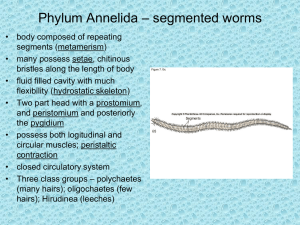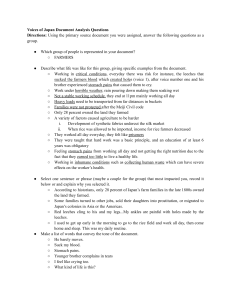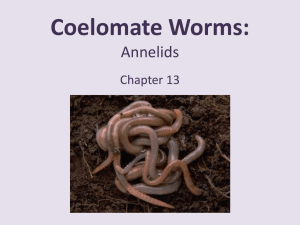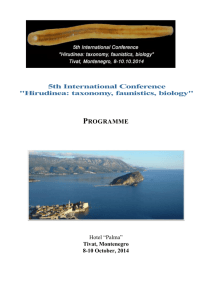Background Information - Wet Tropics Management Authority
advertisement
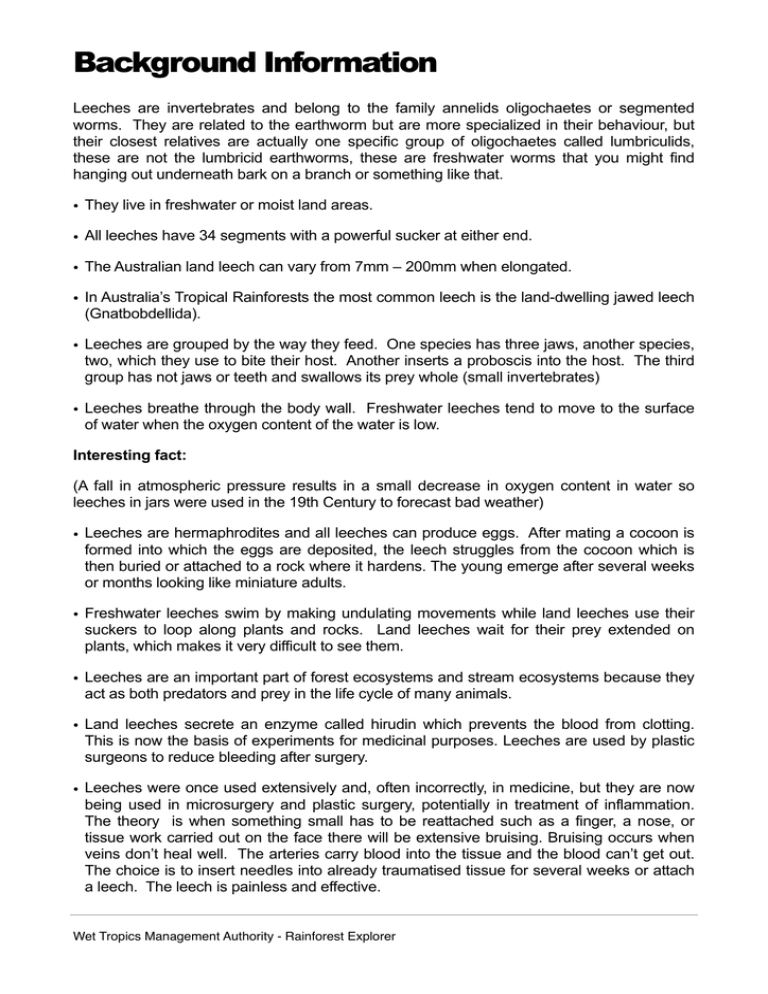
Background Information Leeches are invertebrates and belong to the family annelids oligochaetes or segmented worms. They are related to the earthworm but are more specialized in their behaviour, but their closest relatives are actually one specific group of oligochaetes called lumbriculids, these are not the lumbricid earthworms, these are freshwater worms that you might find hanging out underneath bark on a branch or something like that. • They live in freshwater or moist land areas. • All leeches have 34 segments with a powerful sucker at either end. • The Australian land leech can vary from 7mm – 200mm when elongated. • In Australia’s Tropical Rainforests the most common leech is the land-dwelling jawed leech (Gnatbobdellida). • Leeches are grouped by the way they feed. One species has three jaws, another species, two, which they use to bite their host. Another inserts a proboscis into the host. The third group has not jaws or teeth and swallows its prey whole (small invertebrates) • Leeches breathe through the body wall. Freshwater leeches tend to move to the surface of water when the oxygen content of the water is low. Interesting fact: (A fall in atmospheric pressure results in a small decrease in oxygen content in water so leeches in jars were used in the 19th Century to forecast bad weather) • Leeches are hermaphrodites and all leeches can produce eggs. After mating a cocoon is formed into which the eggs are deposited, the leech struggles from the cocoon which is then buried or attached to a rock where it hardens. The young emerge after several weeks or months looking like miniature adults. • Freshwater leeches swim by making undulating movements while land leeches use their suckers to loop along plants and rocks. Land leeches wait for their prey extended on plants, which makes it very difficult to see them. • Leeches are an important part of forest ecosystems and stream ecosystems because they act as both predators and prey in the life cycle of many animals. • Land leeches secrete an enzyme called hirudin which prevents the blood from clotting. This is now the basis of experiments for medicinal purposes. Leeches are used by plastic surgeons to reduce bleeding after surgery. • Leeches were once used extensively and, often incorrectly, in medicine, but they are now being used in microsurgery and plastic surgery, potentially in treatment of inflammation. The theory is when something small has to be reattached such as a finger, a nose, or tissue work carried out on the face there will be extensive bruising. Bruising occurs when veins don’t heal well. The arteries carry blood into the tissue and the blood can’t get out. The choice is to insert needles into already traumatised tissue for several weeks or attach a leech. The leech is painless and effective. Wet Tropics Management Authority - Rainforest Explorer


